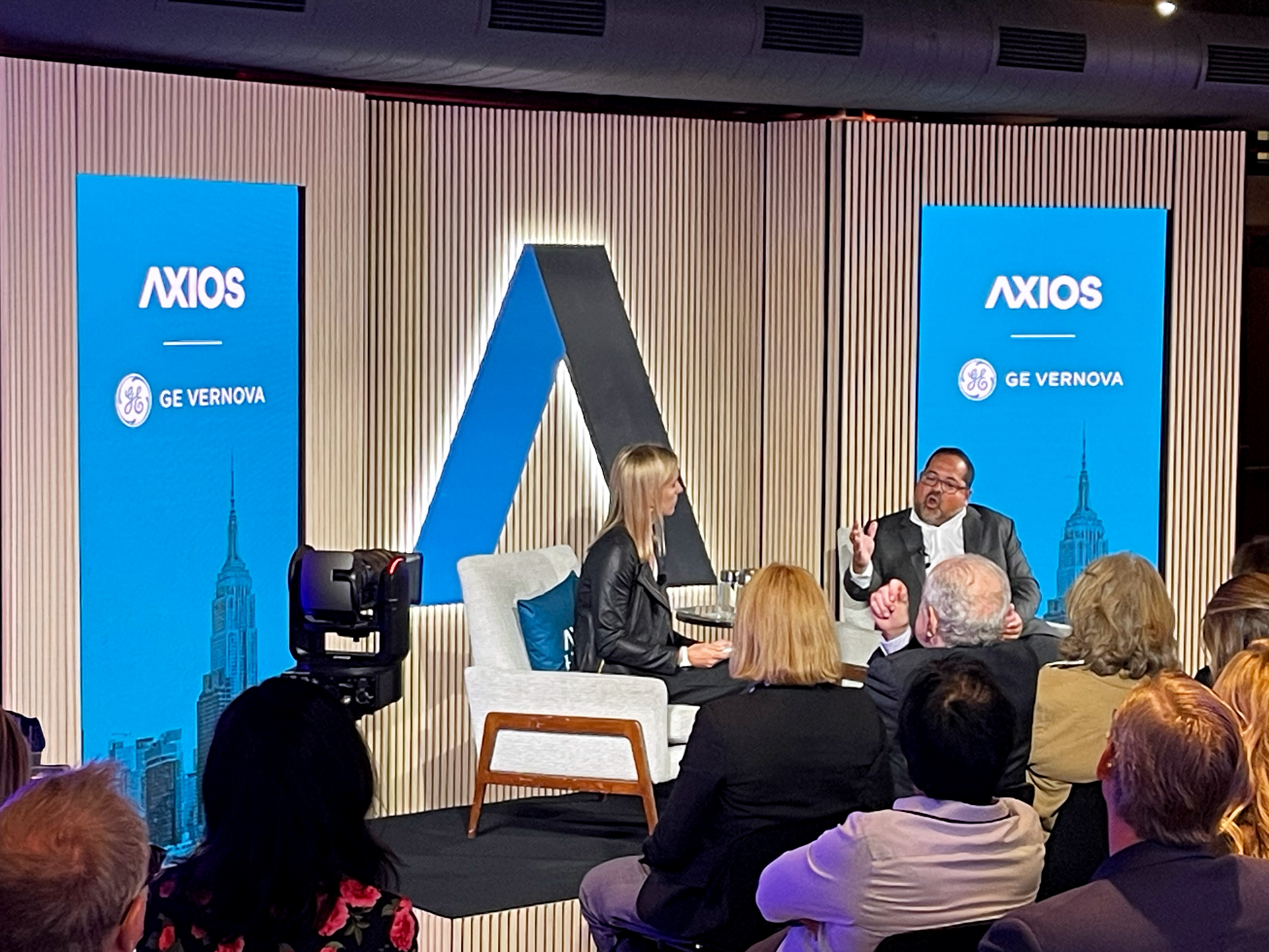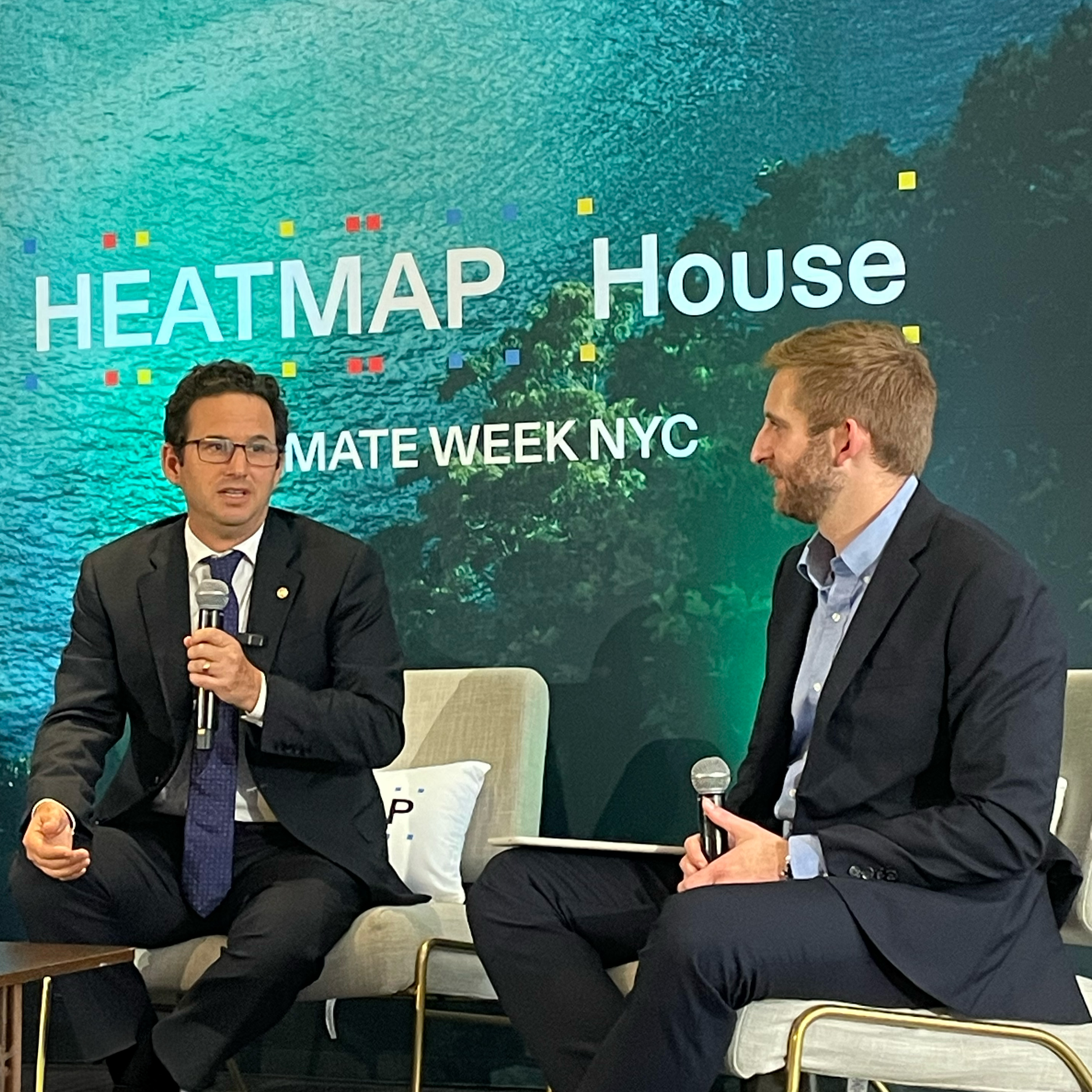
November 18, 2025
November 18, 2025

Reading time
October 7, 2025
October 6, 2025

Every year, Climate Week NYC seems to get bigger and busier. In 2025, leaders from across the energy, technology, environmental, policy, and academic realms descended on the city with about 100,000 of their friends for eight jam-packed days of conversations about climate change, the energy transition, and AI’s seemingly insatiable energy thirst.
Our AI Energy & Infrastructure team was on the ground for a temperature check after a tumultuous year. A few themes dominated the week, while some surprises kept us on our toes. Here’s what we walked away with.
The least surprising part of the week was its all-consuming focus on how to power AI. Solutions like Bloom Energy's fuel cells are already providing reliable, lower-emissions energy for data centers, meeting Energy Secretary Chris Wright’s call to “bring the energy with you."
But hurdles remain. For energy companies, the challenge has shifted from tech innovation to infrastructure build-out – the "missing middle," or the infamous Valley of Death. Investments are flowing into “later-stage, technology-ready companies,” but VC is often poorly suited to fund large-scale infrastructure. Permitting remains a major obstacle for many companies, with the need for reform brought up time and again.
The energy industry is desperate for predictability around policy and tariffs, which has been elusive over the last year.
Certainty in these areas — like wind and solar tax credits — can help justify and execute long-term, large-scale infrastructure projects. Stability in independent government bodies is also crucial: former Federal Energy Regulatory Commission (FERC) Commissioner Neil Chatterjee raised concerns about how the politicization of agencies like FERC stalls industry progress by jamming the gears with uncertainty.

Conversations throughout the week acknowledged how consumer electricity prices — which AI data centers are heavily influencing — are fresh in voters’ minds heading into 2026 elections. In fact, 57% of registered voters say electricity prices have a lot or a decent amount of impact on their personal finances right now.
Communicating clean energy’s benefit as a cheaper option is key for both public acceptance and consumer adoption. Companies need to highlight lower costs instead of focusing purely on climate action to break through. In Tom Steyer’s words, “Renewable energy is crushing it in the real economy, but losing in the attention economy.”
Many of the week’s conversations had an unexpectedly upbeat tone given the energy industry’s obstacles over the last year. When Axios correspondent Amy Harder reflected on the surprisingly sunny mood in climate tech and asked Form Energy CEO Mateo Jaramillo why, he quipped, “Climate is just another way of saying trillion dollar market.”
Those working at the intersection of AI and energy, like Crusoe Co-Founder and COO Cully Cavness, cited customers who “will pay for innovative, cleaner energy” as the source of the optimism.

Hyperscalers like Google and Microsoft acting as "first of a kind" (FOAK) customers and investors for novel technologies like Sublime Systems’ cement, small modular reactors, and fusion energy are creating market signals and accelerating bankability.
Several energy leaders expressed concern about whether the industry will have the talent it needs to scale. To combat this, GE Vernova CEO Scott Strazik spoke about establishing the company’s headquarters in Cambridge specifically because of its proximity to universities.
The talent concern was especially strong among nuclear energy leaders. Even as public interest, political support, and investments in their technology grow, leaders worry that talent could become the industry’s bottleneck.
Though the U.S. is stepping back from climate action, global leaders are determined to push forward with developing and deploying new technologies. While some have lamented the U.S. ceding ground to international competitors on renewable energy, others say reducing emissions in any part of the world is something to celebrate. As Tom Steyer put it: “We shouldn't be angry at China for doing a good job. We need to participate and get back to leadership.”
On stage at Heatmap House, U.S. Senator Brian Schatz of Hawaii encouraged taking the long view, reminding us that this is a “generational fight.” His message to leaders outside the U.S.: “We will be back, but do not wait for us.”

Walking away from another hectic Climate Week, one thing was clear: the convergence of AI and clean energy is creating big opportunities for those ready to move and scale fast. Our AI Energy & Infrastructure and Public Affairs teams are eager to help ambitious companies turn this moment of transformation into momentum. Reach out to us to learn more.

October 28, 2025
October 28, 2025